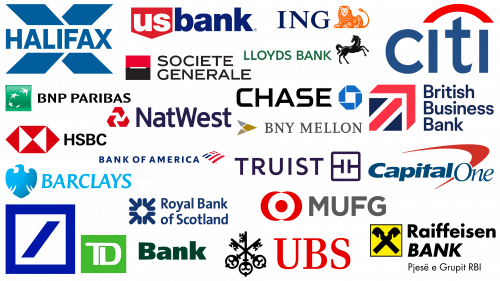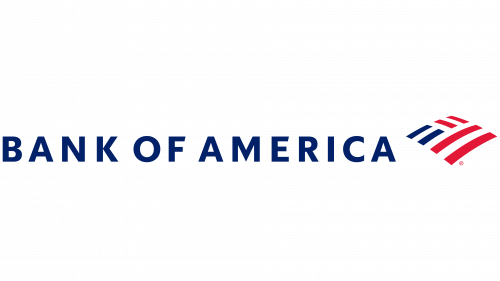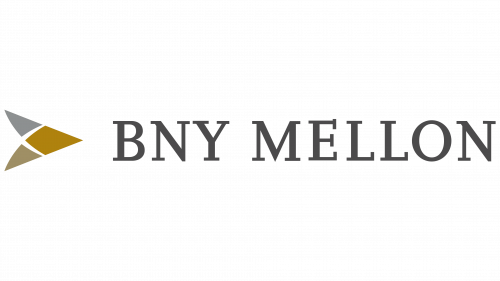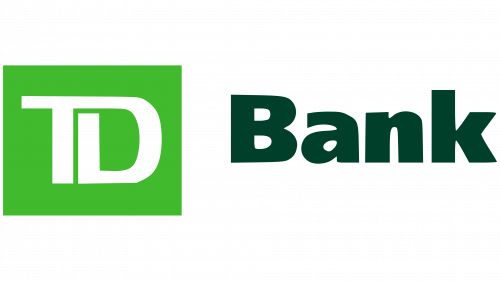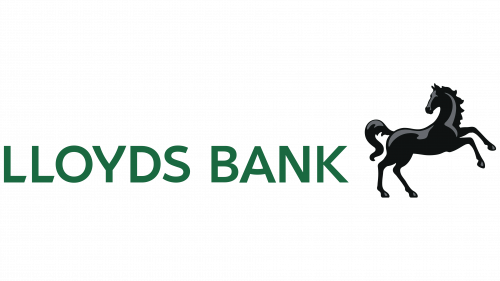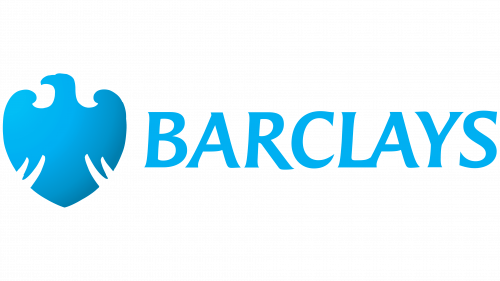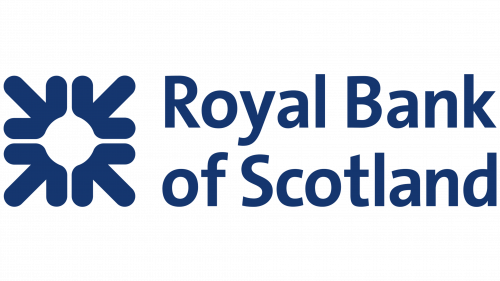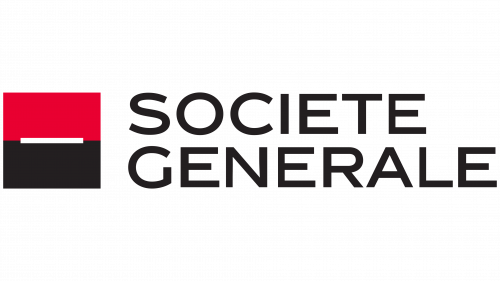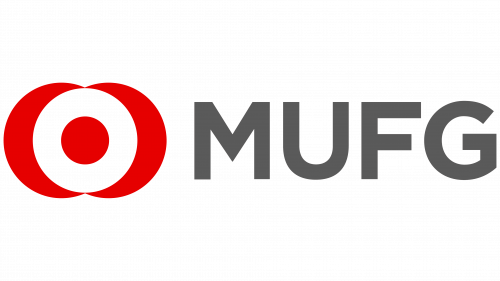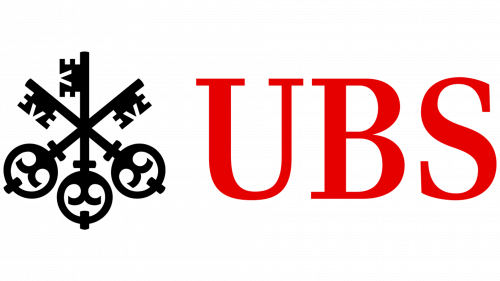Logos of banks from all over the world are carefully designed to create a memorable and emotional connection with potential customers. The symbolic representation of financial institutions plays an important role in the success of the institution, evoking trust and reliability before a person even uses its services.
Many consumers, whether their goals are business, investing, or simply saving, delve deeper to research information to identify a trustworthy bank. In this competitive environment, the impact of a logo is significant: it can both attract potential customers and drive them away from a competitor.
An introduction to popular bank logos
Banking institutions operate on a foundation of trust. From the very beginning of a consumer’s interaction with a bank, the seeds of trust must be laid, cultivated, and nurtured. Therefore, the bank logo assumes paramount importance.
A look at some famous bank logos reveals an amazing combination of creativity and strategic thinking. With all the diversity in their designs, some common features can be identified.
For example, the logos of banks in the US, UK, and other countries of the world are dominated by blue color. Why? Blue color creates a sense of conservatism, reliability, and trustworthiness, characteristic of financial institutions.
In addition to logo colors, typography plays a crucial role in shaping perception. Modern banks favor sans-serif fonts. Their clean, unadorned lines resonate with the modern audience, combining simplicity and modernity. At the same time, some banking institutions are inclined to fonts with serifs.
Symbolism is another powerful tool used by banks in their logos. Symbols convey meaning more succinctly than words. A square with its solid lines and angles can signify strength and unwavering stability.
The most famous US bank logos
The financial tapestry of the United States features many bank logos, each vying for recognition and credibility in a vibrant marketplace. The diversity of these emblems reflects the rich history and evolution of the American banking sector. Each design represents the bank’s brand and embodies its values, mission, and heritage.
If you dive into this vast ocean of logos, there are a few that stand out for their visual appeal, the story they tell, and the values they represent. These icons have become synonymous with reliability, innovation, and customer focus.
For example, the emblems of banks that have stood the test of time. These institutions have weathered economic storms and remained strong, and their logos have evolved while retaining core elements that resonate with generations of customers.
Bank of America
One of the most well-known names in the American banking sector is Bank of America. As a global financial holding company and a respected investment bank, its roots go back several centuries.
Emerging as the “Massachusetts Bank” in the late 18th century, namely in 1784, it underwent a significant change in its branding. By 1959, it became known as “BankAmerica,” and in 1998, it was named “Bank of America”.
The Bank of America logo is steeped in symbolism. Drawing inspiration from the national colors of the U.S. flag, it creates an image of patriotism and unity. The imagery accompanying the bank’s name is also not arbitrary. It reflects the essence of a farmer’s field combined with elements reminiscent of the U.S. flag.
Chase Bank
JPMorgan Chase, a titan of the financial world, owns Chase Bank. The bank was founded in the late 18th century, in 1799, making it a rich history of over two centuries. As one of America’s leading banks, it has an extensive network of over 5,100 branches across the country.
The Chase Bank logo is a testament to modern design aesthetics. The bank’s name, typed in a sans-serif uppercase font, is assertive and modern. But what stands out is the emblematic geometric pattern that accompanies the name. At a glance, it resembles a circle with a square inside. The fluidity of the abstract emblem can be interpreted as an indication of the adaptive and forward-looking nature of the bank.
Citi Bank
Originating as the Bank of New York, Citibank took its first steps into the financial arena in 1812. Over the following years, it has grown into an international giant in the banking sector. With an impressive presence of over 2,649 branches in 19 countries, Citibank’s growth and expansion trajectory is truly commendable.
The Citibank logo is a blend of tradition and modernity. Shades of blue and red, reminiscent of the American flag, evoke a sense of patriotism and national pride. But, the logo is not limited to the color scheme. One of the defining features of this design is the skillfully crafted arc connecting the two “I’s” in the word “Citi.” This curved design, reminiscent of an umbrella, has a symbolic meaning.
By using a sans-serif font, Citibank presents itself as a modern financial institution that remains accessible and understandable to its vast and diverse clientele.
Truist
Emerging into the financial market in 1872, Truist Bank is a testament to its consistent success and adaptability in the banking world. As a prominent financial holding company, the bank has an extensive network of 2,781 branches located in 15 U.S. states. Targeting a diverse clientele, Truist Bank offers a full suite of banking solutions for both consumer and commercial customers.
Truist Bank’s visual identity is both striking and symbolic. At the heart of its branding is a carefully crafted word mark in a deep purple color. The deep purple color, traditionally associated with high quality, emphasizes the bank’s desire for a high level of service.
The geometric motif accompanying the bank’s name is symbolic: a square encompassing two turned “T” letters. This design element bears a great resemblance to a lock. The essence of the lockbox analogy is to convey Truist Bank’s unwavering commitment to the safety of its customers’ assets and their financial well-being.
Capital One
Founded in 1994, Capital One is a formidable player in the financial services sector despite being relatively new compared to some of its competitors. With offerings ranging from savings accounts and general banking services to credit card and loan servicing, this bank holding company has quickly expanded its reach. Today, it is represented by more than 755 branches, a testament to its rapid growth and recognition in the marketplace.
In Capital One’s visual identity, the colors used resonate deeply with the American spirit. The harmonious combination of blue and red, reminiscent of the U.S. flag, speaks to the American roots and values this country holds dear. The compelling logo design is characterized by a wordmark combining serif and sans serif fonts.
The dynamic swoosh symbol accompanying the name is not just a decorative element. Positioned with an upward and rightward slant, it symbolically emphasizes Capital One’s relentless desire to innovate and its commitment to paving the way to a brighter financial future for its clients.
BNY Mellon
Founded in 1784, BNY Mellon, or The Bank of New York Mellon Corporation as it is officially known, is the product of strategic mergers and consolidations over the centuries. It is a vivid testament to the ever-changing nature of the financial world. Today, this organization is recognized as one of the key players in the investment banking market.
The logo, rendered in a sophisticated dark gray color, uses a classic serif font. Next to the iconic font is an arrow symbol, a recognized signifier of forward motion, momentum, and upward trajectory. This symbolic choice underscores BNY Mellon’s commitment to preserving its heritage and continually innovating and moving forward in the rapidly changing world of finance.
The strategic use of gold tones in various brand elements subtly emphasizes the bank’s core focus: wealth management and financial growth.
US Bancorp
Established in 1863, US Bancorp is a monumental structure in the American banking sector. With an extensive network of more than 3,100 branches, its presence is predominantly in the western and midwestern regions of the country.
A thoughtful selection of design elements is noticeable in the visual appearance of US Bancorp. The logo’s robust sans-serif typeface is composed entirely of lowercase letters. The red, white, and blue palette immediately evokes the American flag, emphasizing the deep roots of the bank’s American heritage and instilling a sense of patriotic pride and reliability.
But the most striking element of the logo is the emblematic shield covering part of the “US” logo. It serves as a visual safeguard for customers, reaffirming the bank’s commitment to protecting their assets and interests.
TD Bank
Founded in 1852, TD Bank has carved out a special place in the vast world of American national banks. Concentrating its primary operations on the East Coast, it dominates in terms of its extensive network, deposits, and total assets, making it one of the nation’s banking giants.
The use of green differs from the traditional color schemes of most American banks. It is a hue often associated with prosperity, wealth, and growth. It is a light hint of the bank’s vision of a prosperous financial future for its customers.
The bold and assertive font creates an aura of confidence, demonstrating the bank’s solid foundation and unwavering promise of stability for its customers.
The design intricacies of the “TD” logo further emphasize the brand ethos. The interconnectedness of the letters goes beyond mere aesthetics. It subtly emphasizes the bank’s commitment to building a community of its customers, to collaboration, unity, and mutual growth.
Logos of popular UK banks
The financial sectors of the US and the UK, which are independent developed countries, have some distinctive features in their branding, particularly in the choice of logo colors. American banks often use shades reminiscent of the national flag – red, white, and blue.
On the other hand, UK banks prefer colors that exude stability and confidence. Deep blues, greens, and earthy tones prevail, emphasizing reliability and deep heritage.
Lloyds Banking
When it comes to British banking and its iconic symbols, Lloyds Banking Group undoubtedly stands out. Founded in the mid-18th century, this financial institution has not only stood the test of time but has also become a dominant force in the UK banking sector, thanks to its strategic location in the world’s financial center – London.
The choice of green in the Lloyds Banking Group emblem is distinctive and significant. Unlike the blue and gray colors familiar to many financial institutions, green is associated with prosperity, abundance, and constant growth.
An additional decoration of the logo is the emblematic galloping horse. It resembles a horse rushing forward, not stopping in front of difficulties, embodying the spirit of perseverance. This choice reflects the bank’s centuries-long path of overcoming economic ups and downs but always moving forward. The combination of the bright green hue and the dynamic horse image positions Lloyds Banking Group as a beacon of stability, strength, and growth in the financial world.
HSBC
With a history dating back to the mid-19th century, HSBC Holdings has grown into a colossal financial organization with operations spanning all continents. As one of Europe’s leading banking institutions, it has a particularly strong presence in the UK financial sector.
HSBC’s distinctive logo distinguishes it from many of its British competitors. Unlike the more familiar symbols of the banking world, HSBC’s design is intricate and symbolic. The logo is dominated by red and white shades; it consists of many triangles, forming a design reminiscent of an opening box.
Geometric patterns, including squares and triangles, fulfill a dual purpose. The foundations on which the HSBC empire has been built over the years are reflected in these solid shapes, emphasizing stability and unwavering strength. This emblem is accompanied by a bold sans-serif font. The simple yet impactful typography emphasizes the bank’s position in the global banking ecosystem, its dominance, and credibility.
Barclays
Barclays, a banking giant from British shores, boasts a rich three-century history, having been founded in the late 17th century. Located in the heart of London, this banking giant has firmly established its place as a key player in the UK financial landscape. Among its many groundbreaking achievements, the introduction of one of the very first ATMs stands out, marking a significant advancement in the convenience of banking.
The Barclays Bank logo shimmers in shades of blue, a color that has long been associated with reliability and confidence. Central to the Barclays logo is the formidable image of the eagle, a universal symbol of power and majesty. The image of the eagle does not just demonstrate the power; it is intricately molded in the form of a silhouette of a shield. This combination of symbols evokes dual thoughts of strength and reliability, emphasizing the bank’s commitment to being a trustworthy custodian of its customers’ funds.
NatWest
The NatWest Group, officially known as National Westminster Bank, emerged in the late 1950s and is relatively modern compared to other long-established British financial institutions. Despite its recent emergence, the bank has gained considerable recognition by becoming an integral part of the Royal Bank of Scotland group. Notably, the UK government owns a portion of the bank’s shares, indicating its importance in the country’s banking system.
Deviating from the traditional blue color scheme often found in the logos of British banks, NatWest presents in its logo a unique combination of red and purple colors. Bright red geometric figures inscribed in the design not only attract attention but also carry a deep meaning. In contrast, the purple hue brings thoughts of elegance and sophistication, indicating that the bank prides itself on providing its customers with a high-end and sophisticated service.
Royal Bank of Scotland
Founded in 1724, the Royal Bank of Scotland is a testament to nearly three centuries of Scottish banking heritage. An integral subsidiary of the NatWest Group, the bank has a rich history and a commitment to dedicated and honest customer service.
A look at the bank’s logo provides an intriguing insight into the design of UK bank logos. Drawing inspiration from the “Daisy Wheel,” the emblem originally depicts a set of 36 coins neatly arranged in the shape of a square. More than just an artistic representation, the emblem resonates deeply with the bank’s ethos of prudent wealth accumulation and skillful financial management.
Complementing this emblem was the choice of a deep blue hue for the logo. Blue is not just an aesthetic choice; it serves as a visual confirmation of the resilience, reliability, and unwavering trust that the bank has earned over the years. The interplay of the unique design and color scheme not only sets the Royal Bank of Scotland apart but also underscores its desire to maintain the trust of its customers.
British Business Bank
Established in 2014, the British Business Bank has become an important institution of the UK government to help the country’s start-up businesses expand and prosper. Its primary mission as the government’s economic development arm is to provide access to credit and financing for start-up organizations, allowing them to thrive.
The British Business Bank logo has an intricate design. Drawing inspiration from the national flag, it seamlessly blends distinctive colors to evoke a sense of patriotism and concern for local businesses. The emblem is more than just a visual representation; it carries deep symbolism. The square, a geometric figure synonymous with firmness and solidity, emphasizes the bank’s role as a stable pillar supporting business endeavors.
The upward pointing arrow, elegantly incorporated into the design, serves as a metaphorical reference to the bank’s ambition: to promote the continued growth and development of the UK’s entrepreneurial environment.
Halifax
Founded in 1853 in the county of West Yorkshire, from which it takes its name, Halifax Bank, originally known as Halifax Building Society, has become a major figure in the British banking system. With its roots in the region, the company has expanded its reach and is now one of the UK’s leading building societies.
Halifax’s emblematic image has been created with the utmost care. The logo, rendered in dark blue tones, evokes a sense of trust, reliability, and unwavering commitment to its customers. In addition, the brand name is subtly overlaid with a cross. Upon closer inspection, it resembles arrows, which in many cultures and designs signify direction and forward movement. In the context of Halifax, these arrows may well symbolize the bank’s commitment to leading its customers forward and fostering their personal and financial growth.
Other bank logos and names
Bank logos, regardless of their geographical origin, should, in all cases, reflect qualities such as solidity, evolution, and forward-thinking. While there are certainly many outstanding bank logos in the UK and the US, there are many exceptional designs on the global stage that reflect the essence of their respective financial institutions.
The significance of the Deutsche Bank logo from Germany on the European continent cannot be overlooked. The unambiguous blue square with a white slash confidently conveys stability and modernism. This logo is a testament to Germany’s economic strength and the bank’s reputation for steady growth and innovation.
In Asia, the logo of Japanese bank Mitsubishi UFJ Financial Group (MUFG) has a rich historical significance. The design in the shape of three diamonds evokes a sense of unity, sustainability, and the shared heritage of the three founding companies. The deep red color emphasizes the company’s continued commitment to serving its vast clientele.
National Bank of Abu Dhabi’s logo, which transitions to the Middle East, is a prime example of combining traditional aesthetics with modern design principles. The golden-green emblem symbolizes luxury and prosperity, while the image of the falcon, synonymous with Emirati culture, represents vision and leadership.
Latin America has its own iconic bank logos, too. Banco do Brasil, with its minimalist but deep yellow and blue design, reflects the national flag and embodies the spirit of the country.
Across the globe, these examples emphasize one universal truth: the importance of a bank’s logo reflecting its ethics, heritage, and promise to its stakeholders.
Deutsche Bank
With its extensive network and distinctive logo, Deutsche Bank AG holds a special place in the global banking landscape. Originating from Germany, this financial titan provides a multitude of services, including investment solutions, and has established itself in many countries around the world.
Deutsche Bank AG chose a simple and symbolic emblem in a vast sea of banking logos, which mostly consist of text or intricate designs. The emblem is a square intersected by a diagonal line. This minimalist design, for all its simplicity, is filled with meaning.
The choice of a dark blue shade for the logo is a strategic move. This shade is associated with qualities such as reliability, depth, and wisdom. With this symbolic image, Deutsche Bank AG demonstrates its commitment to customer advocacy and its pursuit of operational excellence.
ING Bank
ING Bank, with its roots in the Netherlands, has become one of the world’s leading banking institutions and has undergone a centuries-long evolution since its founding in 1743. Since then, its original name has changed, but the bank’s influence has only grown, and it has taken an impressive place on the world stage with assets worth trillions.
The ING Bank logo harmoniously combines tradition and modernity. The use of serif font gives the brand an atmosphere of traditionality, reliability, and long-standing reputation. However, the real decoration of the logo is the image of a lion in a bright orange color.
The symbolic figure of a lion represents courage, leadership, and greatness. It is no coincidence that this majestic creature is also the emblem of the Netherlands, which emphasizes ING Bank’s deep connection with its homeland. Combined with the color orange, often associated with the Dutch royal family and signifying national pride, the logo reflects the family tree. The overall design effectively conveys a sense of heritage intertwined with the dynamism of modern banking.
Societe General
Founded in 1864, Societe Generale Bank has firmly established its place in the French banking sector. As the third largest bank in France, its influence is not limited to its home country but extends throughout Europe. Its status is further emphasized by its designation as a “systemically important” bank, which demonstrates its critical role in ensuring the stability and functioning of the global financial system.
Societe Generale displays a carefully designed logo that speaks to the bank’s ethics and values. The logo is a combination mark: a sleek sans-serif word mark in a confident black hue and a distinctive square. The square is divided into two halves – black and red. This duality is symbolic and reflects the delicate balance between professionalism (black) and passion (red).
In the center of the square is a white slash. It recalls traditional banking practices, conjuring up images of old-fashioned deposit boxes, testifying to the bank’s long history and its commitment to safeguarding its customers’ funds.
MUFG
Japanese company MUFG, short for Mitsubishi UFJ Financial, has quickly gained a reputation as one of the largest banks on the world stage. Although MUFG was founded in 2006, making it younger than many banking giants, its meteoric rise to prominence speaks to its strategic vision and effective execution. Today, it is one of the world’s leading banks.
At first glance, the logo looks minimalistic and modern. However, a deeper look reveals a reference to traditional Japanese culture. The design is based on the concept of the “all-seeing eye,” which is common in Japan. The choice of red as the dominant color in the logo is not accidental. In Japanese culture, red is not just a color. It has a deep resonance, often symbolizing good luck and positive energy. The bank’s logo effectively combines modern design aesthetics and culturally relevant elements, reflecting its approach and roots in Japanese tradition.
BNP Paribas
The French bank BNP Paribas is one of the leading figures in international banking. Its creation in 2000 was the result of a strategic merger between two banking titans: Paribas and the BNP organization. This merger paved the way for the bank’s rapid growth to become the second-largest banking conglomerate in Europe, second only to HSBC. Globally, it ranks as the ninth-largest banking organization in the world.
The BNP Paribas logo design takes a distinctive approach that sets it apart from many banking institutions. The dominant element of the logo is a green square, symbolizing the foundation of stability and growth. Within this square are four white stars, skillfully crafted to create the illusion of metamorphosis into a bird.
The stars also have a deeper meaning. They symbolize the European Union, emphasizing the key role of the bank and its wide presence in the European financial sector. This symbolism seamlessly integrates BNP Paribas’ European heritage and its commitment to creating innovative banking services for its customers.
UBS Bank
Headquartered in the financial center of Switzerland, the UBS Group holds a prominent position in the global banking system. With its broad reach, UBS is prominent among major financial epicenters and is the leading private bank in the world.
The UBS Group’s corporate identity is a carefully crafted logo imbued with symbolism. At the forefront is a classic serif typeface that reflects the bank’s long heritage and gives the brand sophistication and seriousness. In addition to the font, three distinctive keys take center stage in the logo. At an elementary level, these keys evoke a sense of security and impenetrability, reassuring customers that the bank is steadfastly committed to safeguarding their assets and interests.
The significance of these keys goes beyond the mere notion of security. They symbolize the fundamental principles of the UBS Group. Each key is evidence of one of the three pillars that underpin the bank’s ethos: confidence, security, and discretion. The UBS Group logo serves as a visual manifesto that summarizes the bank’s heritage, its unwavering commitment to customer safety, and the core values that have shaped its strong reputation in the financial industry.
Raiffeisen Bank
Raiffeisen Bank occupies a prominent position among Austrian banking institutions and has a striking corporate identity that sets it apart from its competitors. Opening in 1927, the bank has become a financial mainstay in the region, helping many generations in their economic endeavors.
At the heart of its distinctive identity is its emblem in bright yellow, a rare choice for the banking sector. This bold color choice provides instant recognition and creates an image of optimism, energy, and innovation – essential qualities in the dynamic world of finance.
Embedded in this vibrant background is the Gable cross, a symbol with rich historical significance and cultural relevance. The emblem, consisting of two intertwined horse heads, guarantees patrons, embodying the ideals of protection and security. These equine figures echo notions of strength, reliability, and unwavering support, reflecting the bank’s commitment to its customers.
According to historical sources, similar symbols once adorned European homes on rooftops. It was believed that such symbols, which brought good luck and protected the home from harm, represented the collective faith and trust of the community. By integrating this ancient motif into its logo, Raiffeisen Bank seamlessly connects the past with the present, demonstrating its deep values while recognizing the richness of European traditions.
Introduction to the logos of financial institutions
As the backbone of the financial system worldwide, banks understand the power and importance of branding. These institutions are more than just places to conduct monetary transactions; they play a key role in the global economy, contributing to its growth, providing stability, and building trust between individuals and businesses. Therefore, their visual identity is not just an aesthetic choice but an embodiment of their values, reliability, and commitment.
Numerous bank logos around the world provide insight into design principles that resonate with the financial sector. An effective logo is more than just visual appeal; it carries the burden of representing the ethos of an institution and building its reputation. An in-depth examination of these logos reveals patterns and trends, providing invaluable lessons for those seeking to brand themselves in the financial sector.
Trust is one of the main virtues of banks. Therefore, many financial organizations choose a design that demonstrates stability and reliability. Common elements are strict geometric shapes, a restrained color palette, and classic typography. These elements combine to convince stakeholders of the bank’s longevity, durability, and sustainability.
Colors also play their part. For example, the sector is dominated by blue, which is often chosen for its connotations of trust and wisdom. Green symbolizes growth and prosperity, while deeper shades such as burgundy and purple represent sophistication and luxury. The choice of colors is not arbitrary; they are carefully chosen to evoke certain emotions and perceptions in the viewer.
A font, sometimes overlooked, can be the linchpin that unifies a logo. Whether banks choose traditional serif fonts that give a classic charm or modern sans serif fonts that convey modernity and innovation, the font says a lot about the bank’s personality.
To summarize, the sheer number of bank logos around the world is a rich tapestry of design ideas. While individual banks create their own unique identities, the overall goal remains the same: to build trust, symbolize stability, and reflect a legacy of financial excellence.
